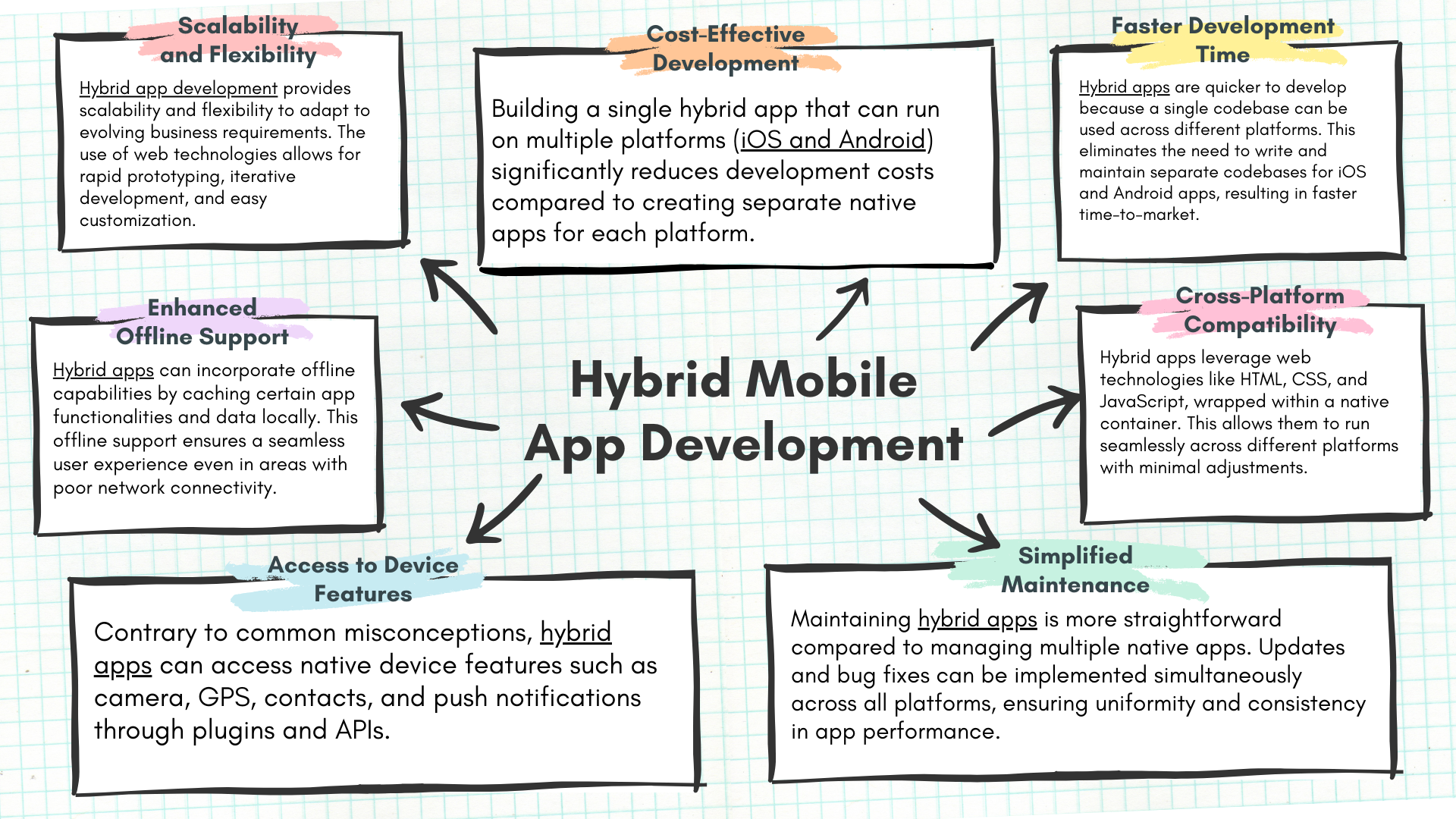Mobile applications have become an indispensable part of our daily lives, serving various purposes from communication and entertainment to productivity and commerce.
When it comes to developing mobile apps, businesses often face the dilemma of choosing between native and hybrid mobile app development.
While native apps are built specifically for a single platform (like iOS or Android), hybrid apps offer a compelling alternative.
In this blog, we’ll explore why hybrid mobile app development is considered better than native apps in many scenarios.
-
Contents
Contents
Cost-Effective Development
One of the primary advantages of hybrid app development is cost-effectiveness.
Building a single hybrid app that can run on multiple platforms (iOS and Android) significantly reduces development costs compared to creating separate native apps for each platform.
This approach not only saves on initial development expenses but also reduces ongoing maintenance and updates.
-
Faster Development Time
Hybrid apps are quicker to develop because a single codebase can be used across different platforms.
This eliminates the need to write and maintain separate codebases for iOS and Android apps, resulting in faster time-to-market.
Businesses can capitalize on market opportunities sooner with hybrid apps, making them ideal for projects with tight deadlines.
-
Cross-Platform Compatibility
Hybrid apps leverage web technologies like HTML, CSS, and JavaScript, wrapped within a native container.
This allows them to run seamlessly across different platforms with minimal adjustments.
With a hybrid approach, developers can reach a broader audience without compromising user experience, enabling consistent functionality and design across devices.
-
Simplified Maintenance
Maintaining hybrid apps is more straightforward compared to managing multiple native apps.
Updates and bug fixes can be implemented simultaneously across all platforms, ensuring uniformity and consistency in app performance.
This streamlined maintenance process translates to reduced downtime and improved overall app reliability.
-
Access to Device Features
Contrary to common misconceptions, hybrid apps can access native device features such as camera, GPS, contacts, and push notifications through plugins and APIs.
Modern hybrid frameworks offer robust support for integrating device-specific functionalities, bridging the gap between native and hybrid app capabilities.
-
Enhanced Offline Support
Hybrid apps can incorporate offline capabilities by caching certain app functionalities and data locally.
This offline support ensures a seamless user experience even in areas with poor network connectivity.
Native-like performance combined with offline accessibility makes hybrid apps a preferred choice for applications requiring consistent availability.
-
Scalability and Flexibility
Hybrid app development provides scalability and flexibility to adapt to evolving business requirements.
The use of web technologies allows for rapid prototyping, iterative development, and easy customization.
Businesses can iterate quickly based on user feedback and market trends, ensuring that the app remains competitive and relevant.
| Aspect | Hybrid Apps | Native Apps |
| Development Approach | Built using web technologies (HTML, CSS, JavaScript) wrapped in a native container | Developed specifically for a single platform (iOS or Android) using platform-specific languages (Swift/Obj-C for iOS, Java/Kotlin for Android) |
| Performance | Generally slightly slower than native apps due to the reliance on webviews for rendering UI | Offers optimal performance and responsiveness, utilizing platform-specific APIs and native UI components |
| User Interface | Uses web technologies, resulting in UI that may not fully match native UI elements and behaviors | Provides native UI components and interactions, offering a seamless user experience consistent with the platform |
| Access to Device Features | Access to device features via plugins and APIs, but with potential limitations and overhead | Full access to all device features and capabilities using native APIs, allowing for seamless integration and performance |
| Development Time | Faster development time as a single codebase can be used across multiple platforms | Longer development time required due to separate codebases for each platform |
| Cost | More cost-effective due to shared codebase and faster development time | Typically more expensive due to separate development for each platform |
| Maintenance | Easier maintenance with updates and bug fixes applied once for all platforms | Requires separate maintenance for each platform, potentially increasing maintenance efforts |
| Offline Support | Offline capabilities can be implemented using local storage and caching techniques | Offers robust offline support with access to platform-specific offline features |
| Distribution | Apps can be distributed via app stores (e.g., Google Play, Apple App Store) like native apps | Distributed via app stores with specific versions for each platform |
| Platform-Specific Features | Limited access to advanced platform-specific features compared to native apps | Full access to all platform-specific features and capabilities |
| User Experience | May exhibit slight differences in user experience across platforms | Provides consistent and seamless user experience tailored to each platform |
| Examples | Ionic, React Native, Xamarin | Swift (iOS), Java/Kotlin (Android) |
Conclusion
While both native and hybrid app development approaches have their merits, hybrid mobile app development offers a compelling solution for businesses seeking cost-effective, efficient, and cross-platform applications.
By leveraging web technologies and native functionalities, hybrid apps combine the best of both worlds, enabling businesses to reach a broader audience and maximize their mobile app investments.
If you’re considering mobile app development for your business, exploring the benefits of hybrid apps could be the key to achieving your goals effectively and affordably.
Embrace the power of hybrid mobile app development with Andolasoft and unlock new possibilities for your business in the ever-evolving mobile landscape.













